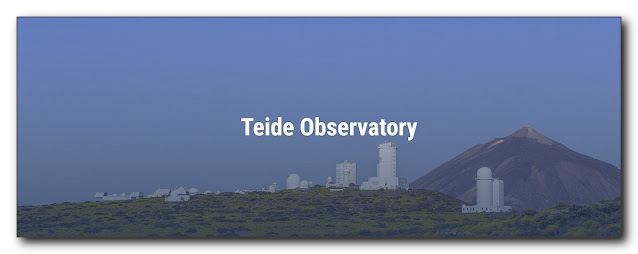National Solar Observatory
I mentioned in a previous blog entry that I had compared one of my solar images to the images captured by the National Solar Observatory in El Tiede, Spain and I shared comparison images. While I was lying in bed last night, I got to thinking that perhaps I should provide more information about the National Solar Observatory. It seems silly to mention this and not explain it a bit.
- Mauna Loa Solar Observatory, Hawaii is situated high in the mountains at an altitude of 11,135 feet.
- Learmouth Solar Observatory, Australia is on the northwest cape on Exmouth Gulf but at an altitude of only 33 feet. This solar observatory is actually a US Air Force Detachment and there is an airfield across the street.
The National Solar Observatory (NSO) is a research and development program funded by the US. Generally speaking, its purpose is to advance our knowledge of the physics of our sun. The NSO isn't actually one physical observatory but a network of observatories around the globe that are constantly collecting data on our sun.
In yesterday's blog entry, I compared my quick and dirty Hydrogen alpha image to the Hydrogen alpha image captured by the NSO Integrated Synoptic Program's Observatory in El Tiede, Spain. This NSO Integrated Synoptic Program (NISP) consists of six observing systems around Earth so the sun can be observed as continuously as possible. Of course, weather interferes with this plan sometimes but the six locations do provide, on average, 91% coverage of continuous monitoring. Images are captured in the Hydrogen alpha wavelength every 20 seconds. This Hydrogen alpha wavelength is what I had imaged yesterday when I compared my data to the NSO data. NOAA, the US Air Force and NASA all use this data. I, myself, actually monitor this data and imagery quite often.
The six observatories are located in the following locations:
- El Tiede, Tenerife, Canary Islands, Spain is located off the southern coast of Morocco and is at an altitude of almost 8000 feet. I used the data from this location to compare to my own data yesterday in a previous blog entry.
- Big Bear Solar Observatory, California is on a lake at an altitude of 6760 feet.
- Udaipur Solar Observatory, India is situated in a lake on an island during the rainy season. When the water recedes during the drier season, the observatory is no longer an island. The observatory is at an altitude of 2460 feet.
- Cerro Tololo InterAmerican Observatory, Chili is high in the mountains at an altitude of 7200 feet.
Although not an observatory, I felt I should include the Headquarters for the National Solar Observatory. Their offices are located on the East Campus of the University of Colorado in the Space Sciences building. This location is not open to visitors.
I should mention that none of these photos, above, are mine. They are from the associated websites and Wikipedia articles.
The little telescope that I had put together for yesterday's experiment has an aperture of 24mm and an effective focal length of 726.7mm (the Hydrogen alpha filter I used has a 4.3x telecentric lens magnifying the native focal length of 169mm to an effective focal length of 726.7mm).
NISP uses the same exact instruments at each of the above listed observatories for capturing their Hydrogen alpha images. These telescopes are automated to capture images every 20 seconds. These instruments have an effective aperture of 28mm (compared to my 24mm) and a focal length of 1000mm (compared to my 726.7mm). The specifications of my Hydrogen alpha instrument are very similar to those of the NISP instruments. The major difference is that I am at an altitude of less than 1000 feet in a location that is known for fog and ground effect climate problems which are less than ideal for astronomy while the Tiede Observatory is at an altitude of almost 8000 feet. Higher altitudes have a huge advantage because you are then imaging/collecting data through less of the Earth's atmosphere.
As you have probably noticed in the photos, some of these observatories are located on bodies of water. Water produces less atmospheric turbulence than the ground so these locations are also desirable for observatories.
I could go on and on about specific research and specific findings but I'll save that for other blog entries at other times.








Comments
Post a Comment